Agent of Deterioration: Pests
by Tom Strang and Rika Kigawa
Table of Contents
- Pest Organisms
- Pest Subtypes
- Sensitivities of Collections to Pest Attack
- Control Activities
- Control Strategies
- Case Study 1: Rodents Living in Large City Gallery
- Case Study 2: Mould Outbreak in a Rural Museum
- Case Study 3: Insects Infest Donation to a Civic Museum
- Case Study 4: Wood Borers in Rural Agricultural Museum
- Application Guides
- Bibliography
- Identification Guides
- Glossary
- Related resources
List of Pests
- Materials, objects, and common damaging insect pests
- Major insect pests and their associated, diagnostic signs
- Major rodent pests
- Actions to avoid pest problems
- Actions that block pest activities
- Detect pests
- Equipment for detecting pests
- Record keeping to assist IPM activities
- Response methods to eliminate pests
- Comparison of treatment methods
- Actions that assist recovery from pest attack
- Basic control of typical high risks
- Intermediate control of typical high and moderate risks
- Advanced control of all perceived risks
Pest Organisms
Pests Footnote 1 ; are living organisms that are able to disfigure, damage, and destroy material culture (Figure 1).
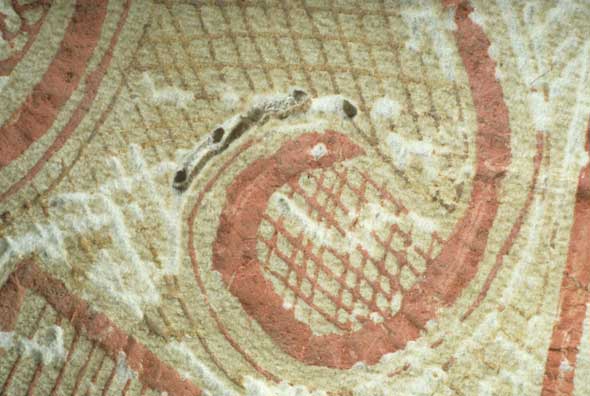
As human habitation and agricultural activities have increased, many pests have adapted to and found niches in our buildings and our undertakings. These pests have moved around the world and proliferated through trade and travel.
Microorganisms, insects, and rodents represent the majority of pests affecting cultural heritage. These three subtypes are significant risks in the north-temperate Canadian environment. Other pests, such as roosting birds, molluscs (marine borers), bats, other invasive mammals, lizards, etc., may be significant despoilers in specific locations, but are not as predominant worldwide inside collection spaces.
There are 830,075 described species of insects, 100,800 species of fungi, and 4,496 species of mammals (Lecointre and Le Guyader ). While pests are but a fraction of these species, a complete list of pests would be too large for the scope of this document. "Pest" will therefore be defined in general terms by the given subtype accompanied by some common examples; however, the control strategies will not be oversimplified.
Non-pest organisms
In nature, there are dependencies and competition among organisms. For example, "beneficial" organisms (spiders, centipedes, and parasitic wasps) prey on pests. On close observation, these non-pest organisms will be seen in collections. As with pests, their presence may also be objectionable, causing modest soiling, and indicating that a collection enclosure is not sealed properly.
Non-pest, "non-beneficial" organisms can also be found in collections (e.g. sowbugs, millipedes). They sometimes indicate a pest problem because of their association with certain environmental conditions or their association with the presence of building perforations. Their presence may be objectionable for the reasons stated above. As well, their bodies may provide food for some pest species. Therefore, controlling these organisms is usually undertaken, preferably by keeping them out.
Pest Subtypes
Pests can be subdivided by biological classification or by the materials they attack. Correctly identifying pests is the first important step in learning the inherent biological limitations of each organism infecting a collection. These limitations are then exploited in order to control them. Be aware that within the pest subtypes, the materials that are attacked will vary. As well, the species within subtypes may have specialized abilities that enable them to exploit or to withstand control measures.
Microorganisms
Fungi (moulds) and bacteria are numerous and ubiquitous. Mould spores and bacterial spores can be airborne or carried along with other particulates. Bacteria are commonly brought into a collection area by contaminated floodwater or can form in standing water in buildings. Fungal hyphae are the destructive phase of mould. The actions of the hyphae stain and digest objects (Figure 2).
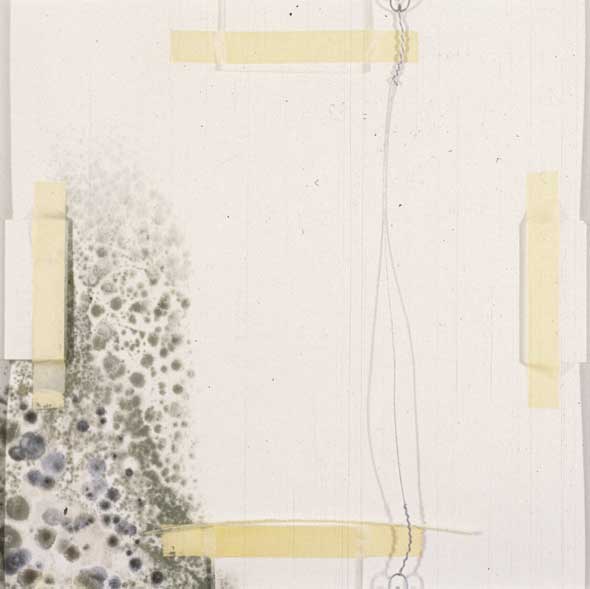
For bacteria to survive, water is needed in the form of continuous very high relative humidity (RH) and a high moisture content in the substrate, which includes environments that are under water. Except for spore-forming bacteria (a survival mechanism that greatly enhances the pathogenic nature of tetanus, botulism, anthrax, etc.), most bacterial risk is severely restricted by avoiding constant high humidity or saturation. Many bacteria species are controlled if conditions are drier than 90% RH. All growth is stopped by an RH level below 70%. For microorganisms, RH is usually expressed in terms of water activity. Other factors in the bacteria's environment that can affect the colony's success are temperature, nutritional value, and pH of the substrate. Specific bacterial risks are associated with contamination by soil, dead or infected animals, stagnant water, nutrient-rich fluids, and sewage. These associations can cause such hazards as anthrax, "Legionnaires" disease, botulism, and so forth. However, a return to environmental conditions unfavourable to bacterial growth does not ensure that pathogenic bacteria or their toxins are destroyed; therefore, anyone working with suspect materials must protect themselves properly.
Moulds are less constrained by a lack of water than are bacteria. However, mould growth is limited by the water available in the substrate material. Many mould spores need near-saturation conditions to trigger germination, and continued moisture to survive. Once the hyphae develop, even the most hardy mould species require moisture levels of at least 65% RH to continue to grow. The vegetative hyphae (in the form of fibrous mats and filaments called mycelia) search for nutrients and digest the substrate. Certain wood-destroying fungi can carry water through long hyphal strands, which means growth can be supported far from the sustaining dampness. Fungal spores are produced above the vegetative growth (the mycelial mat) in specialized organs. These spores are easily spread by air currents and through contact with humans and other organisms.
If moisture is supplied by damp air, mould can be marginally viable in nutrient-rich materials stored above 65% RH. Mould growth increases in vigour above 75% RH, and becomes strongly active above 85% RH. Mould growth is ultimately restrained by immersion in water, which limits oxygen availability. Mould growth is also limited by dehumidification, which consequently limits the amount of water that is available for use in the substrate. This limiting condition is reported in food science literature as "water activity" — a numerical value equal to RH expressed as a fraction (e.g. 75% RH = 0.75 Aw ). In situations where moisture comes from a reservoir of dampness (e.g. soil), the moisture content of the material in contact with this reservoir (e.g. wood sills) has to be reduced to prevent rot. When using moisture meters to determine if organic material is capable of supporting mould growth, the RH limits for growth (say 65%) need to be converted into an equivalent moisture content using a sorption isotherm for that material.
Microorganisms digest, stain, weaken, convey moisture (e.g. "dry rot" fungi), and attract insect pests by modifying and augmenting the nutritive value of an object. Aside from the pathogenic effects of infection, bacteria and fungi pose a health risk to humans simply through high concentrations or chronic exposures that lead to allergic and severe respiratory conditions. Using effective personal protective equipment is strongly advised when working with microorganism contamination (Strang and Dawson a; consult Guild and MacDonald for current recommendations on working with mouldy collections).
Insects
Insects and other arthropods are the most numerous animal pests. Because of their specialization, small size, mobility, sensory capability, and fecundity, insect pests are a persistent threat to the collections they favour (Figure 3).
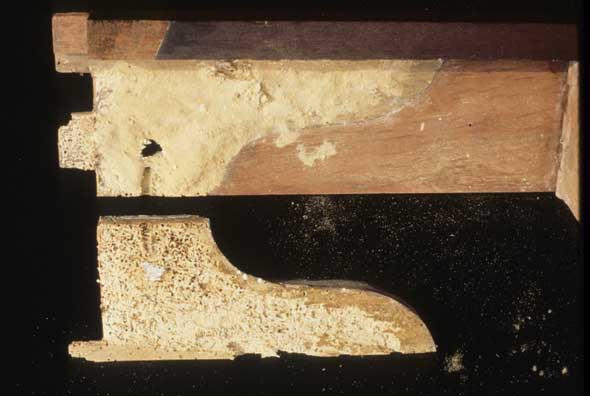
Insects can have very specialized food requirements; therefore, the hazard they pose should be thought of in terms of material type, not object type. Insects are normally present in the natural environment and find their way into collections. Or, they enter collections from infested objects that are sent on loan or are newly acquired, much as insect pests are carried around the world through trade and travel.
Insect life cycles vary. The two common patterns are:
- egg → larval stages → pupae → adult
- egg → nymph stages → adult
Larvae and nymph stages are marked by more or less constant eating and growth. This encourages multiple moults as the insect outgrows its hard integument (outer shell). Adult forms may not eat (e.g. clothes moths), may eat different foods than they do in their larval stage (e.g. dermestids), or be as voracious as larvae are on the object (e.g. Stegobium) Footnote 2 . Pupation may occur away from the food substrate, which decreases the chance the pupa will be preyed upon. Adults may also seek alternative sites to meet mates (e.g. dermestid adults meet on flowers where they also eat the pollen). Insects often rely on pheromone cues to find mates (e.g. clothes moths and wood-boring beetles). Some insects disperse quickly throughout collections, while others tend to stay in one place and reinfest the same materials over subsequent generations. However, the potential to spread is always present.
Insects, and less commonly other arthropods, in their need for food and shelter cause damage ranging from incidental soiling to complete digestion of organic materials. Some insects will also bore into soft plastic foams and materials composed of minerals to lay their eggs or to pupate. Some insects transmit human diseases. The presence of food pathogens, insect body parts, and faecal matter in collections can induce allergic reactions in humans. Therefore, precautions similar to those for handling mouldy material should be used when working around insect-contaminated objects.
Rodents
Rodents are the most dominant mammalian pest in agriculture and commerce. They are usually present in urban or rural localities. (Alberta is the major exception: its long-running, province-wide rat extermination program has been very successful.) Rats and mice easily climb, burrow, swim, and gnaw. They are also very fecund. Because they are often associated with human food and garbage, they are frequently found in collection buildings. They usually establish home ranges within a 20- to 60-metre radius, but may range even farther.
Mice usually establish territories within a 20-metre radius, or even smaller areas inside a building, but can range farther abroad, even up to a couple of kilometres. They breed quickly and, thus, will spread out looking for more resources (food, water, and nesting material). They may find these resources easily available in collection rooms. Rats also live in colonies. They live in established burrows outside buildings or in nests inside a building. Because all rodent pest activity is strongly associated with food availability, control activities are often aimed at making these resources unavailable.
Rodents gnaw all the time on non-food items to deliberately wear and sharpen their constantly growing teeth. They cache food for future use; urinate to form trail marks and deposit faeces as they explore; leave grease marks along trails; disrupt material by gathering nest materials; and create shelters in protected locations (Figure 4).

Dead rodents, sloughed hair, and faecal matter attract and support keratin- and protein-eating insects, which then can spread into collections. A number of human diseases are transmitted from rodent waste; therefore, using respiratory protection and barrier-protective clothing is advised when cleaning any rodent-infested material.
Birds and bats
Several species of birds roost or build nests on buildings. Their nests and faeces soil and deface the supporting structure. This detritus supports populations of keratin- and protein-eating insects. Their nests also harbour parasites. Exposure to avian source dusts (created from faeces, feathers, and nesting materials) may enhance the development of bacterial and viral zoonoses (e.g. chlamydiosis in pigeons and poultry) as well as cause chronic allergic responses. These reasons, along with disturbing patrons by defecating in public spaces, are incentives for suppressing birds (most often pigeon flocks). Accumulations of bird guano (e.g. in attic roosts) can pose microbial human health hazards if this dust is inhaled (e.g. histoplasmosis, cryptococcosis); therefore, full respiratory protection, barrier-protective clothing, and post-exit sanitary practices are advised if entering these spaces or removing such wastes (Strang b). Several prevention methods can be used to reduce bird roosting in vulnerable locations (Figure 5).

Bats roost in attic spaces and wall cavities that are open to the outside. They can enter through gaps larger than 5 mm. Their accumulating faeces can raise similar hazards to those of birds. Staff are advised to handle these wastes in an equivalently safe manner. (For a basic guide for bird and bat exclusion, consult Strang b; for a guide for personal safety, consult Guild and MacDonald .)
Sensitivities of Collections to Pest Attack
What pests want
The object stands in for what the pest would normally search for (food, water, or nesting materials) in its natural environment.
Surface effects from infestations range from cobwebs and dried faecal excretions, to urine stains and agglomerations such as bird nests, and mud wasp and paper wasp nests. These surface effects can permanently mar an object's vulnerable finishes or accelerate a microbial attack on an object.
Grazing and gnawing activities are accelerated by surface deposits and salts that attract a pest, or by the pest's need to chew. Pests chew and digest these materials, not the objects per se. Their attraction to particular objects may be further increased by the object's design if it facilitates access (e.g. the rough surface of an exposed end grain that allows the wood borer to lay its eggs) and shelter, or by residues on the surface. Whatever the reason, it is the pest's native ability to recognize and utilize the material that stimulates and sustains pest damage.
In describing the risks, listing some representative object classes will indicate the vulnerability of materials and the possible extent of pest risk. (Consult Materials, objects, and common damaging insect pests, which uses familiar curatorial categories of materials.)
Sensitivities to moulds
All organic and inorganic surfaces can be colonized by moulds under the right conditions of high humidity and dispersion of nutrients. Damp cellulosics (paper) and proteinaceous (parchment) materials are the most affected because they are entirely digestible, relatively soft, and can be hard to clean at the porous cellular level where microorganisms contaminate an object (e.g. invasive fungal hyphae, tiny spores with strong pigmentation). Paper and parchment objects often have high information content (text, illustrations, etc.), so the obscuring effects of microorganisms are often gravely disfiguring. Moulds will also grow on inorganic surfaces in the presence of nutrients and moisture. The ability to identify microorganisms and their degree of risk to people and materials requires special equipment and training. Being able to distinguish surface mould from dust and other soiling matter is a useful skill that will help guide preventive conservation decisions.
Sensitivities to insects
Due to insects' specialization in feeding, burrowing, and breeding activities, there is a wide diversity in a collection's vulnerability to specific insects. However, some insect pests are generalists, and will affect related groups of materials.
Insects are specialized in their feeding habits due to differently adapted mouthparts, digestive systems, and symbionts (e.g. gut-dwelling microorganisms that convert cellulose to usable sugars). For example, different insects are attracted to dry seeds and to starch-adhesive pasted paper. Although both objects are largely starch-based, weevils are more likely to attack dry seeds and silverfish are more likely to attack starch-adhesive pasted paper because of their different mouthpart structures.
Soiling of objects increases their susceptibility to pest attack, in particular silk and cotton fabrics. These fabrics are not usually eaten as food by insects without the presence of added nutritional materials.
Consult Materials, objects, and common damaging insect pests for a material's vulnerabilities and the corresponding insect pest that will attack the material. Major insect pests and their associated, diagnostic signs describes the insect pests referred to in Materials, objects, and common damaging insect pests.

(furniture beetle), adult.

(drugstore beetle), adult.

(common carpet beetle), adult.

larval cast.

larval cast.

(webbing clothes moth), stages and frass.

(casemaking clothes moth), stages.

(silverfish).

(German cockroach).

(carpenter ant), and galleries.

(psocid or book louse).

damaging attic insulation.
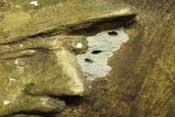
this sculpture.

insect bodies and move on.

damage to textile.
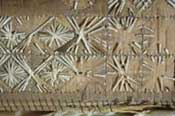
ate this porcupine quillwork.
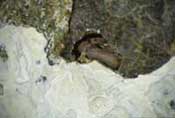
free of the painted sculpture.
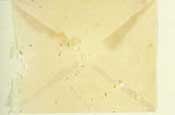
perforated this envelope.
Sensitivities to rodents
Rodents will damage any material that can be chewed or gathered for nesting, including glass fibre insulation. They can carry noxious material in their mouths without risk of swallowing the material. Any materials that are stored in the path of rodents searching for food will be soiled by urine traces and faecal pellets. Any collection object made of starch, protein, or fat (favourite rodent foods) will be consumed or damaged and soiled or removed to another location. Besides creating larders, rodents will also use some areas as common defecation areas — a behaviour that intensifies damage if it happens to be on or within an object. Major rodent pests lists major rodent pests.
Sensitivities to birds and bats
This group of pests is more harmful to heritage structures and less harmful to collection objects. Unrestrained nesting activity introduces soiling, insect pests, dead bodies, and smells that are at least annoying and, at most, health hazards.
Only 3 of the 19 Canadian bat species habitually roost in buildings: little brown bat; big brown bat; and Yuma bat (Strang and Dawson b). Likewise, only a few bird species will cause significant problems: rock dove; house sparrow; starling; and some swallow species (Strang and Dawson b).
Control Activities
The impact of pests can be controlled. It takes basic, but prompt, attention to maintenance and effective sanitation practices to prevent pest access and their spread in collection spaces. Systematic detection programs catch problems early and influence appropriately scaled responses to limit pest damage and remove the offending organism.
Specific action to prevent pest damage can often be used against many pest types. Common situations and preventive actions in the following tables are coded to the specific pest subtype using the following symbols:
 Microorganism
Microorganism Insect
Insect Rodent
Rodent Bird and bat
Bird and bat
Avoid
Avoid, remove, or mitigate the effect of pest attractors to deny them necessary life support. While collection objects are often made of materials inherently attractive to pests, the integrated pest management (IPM) goal is to ensure that the object's storage and display surroundings do not support pests (Figure 6). Actions to avoid pest problems for details.

Block
Segregate valued objects from pests by using pest-resistant materials and practices that will delay or deny access. Use the building as the primary protective barrier. Try to achieve subsequent layers of protection through architectural design that incorporates barriers to pest access, eases inspection and remediation (consult Imholte ), and provides for tightly constructed specimen cabinets. Effectively blocking pest entry requires attention to all seals and junctions on a structure, and ongoing timely attention to maintenance (Figure 7). Actions to block pest activities lists pest-blocking actions.
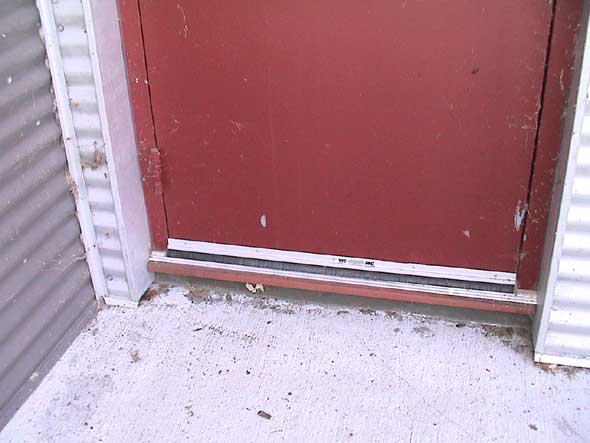
Detect
The philosophy behind pest detection is "early warning — easier cure". Accommodate detection methods in storage areas and exhibit designs by incorporating a means of access for the staff and discouraging creation of blind cavities. This is also important for supporting sanitation practices. Both traps and direct inspection can be used effectively to find pest problems (Figure 8). Encourage as many staff members as possible to regularly check for pests by providing basic IPM information sessions and by creating an easy-to-use pest incident report system. Detect pest lists actions that help detect pests.
Key locations to monitor are:
- collection storage areas
- in and under display cabinets
- food service areas
- mechanical and service rooms
- basements
- all entranceways
- fireplaces
Other locations should be added when a significant pest presence is noticed. Consult Strang ( a, b) and Pinniger ( ) for information on detection programs. Consult the Bibliography for pest identification guides, which will help establish in-house expertise.
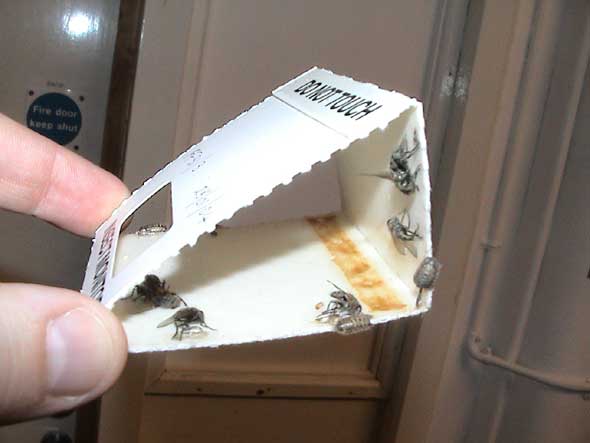
To assist in pest detection, assemble the tools listed in Equipment for detecting pests in a convenient carryall.
Record keeping to assist IPM activities lists the minimal information needed to create effective trapping and visual inspection records. The purpose for keeping good permanent records of pest activity is to discover and track recurrent problems, or to demonstrate that pest-related problems have been solved by remedial actions. Trap and visual inspections can be recorded in separate ways as long as the information can be coordinated for reporting the results. Paper records can suffice, but electronic versions facilitate working with the data and analysing results with computerized plotting and presentation software.
Respond
Eliminate pests from structures, objects, and support materials by methodical planning and use of appropriate measures (Figure 9). The priorities are to use methods that are effective, environmentally responsible, and inexpensive. Response methods to eliminate pests lists responses by target pest subtype.
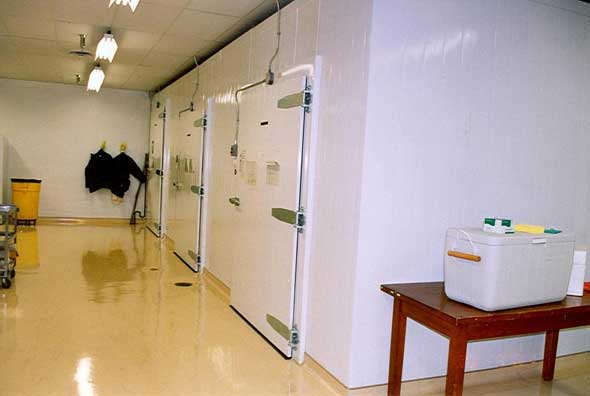
Comparison of treatment methods compares treatment advantages and disadvantages to help staff choose the best method for their facilities situation.
Recover
IPM activity should be undertaken by a pest control coordinator who has been given the responsibility and resources to make this improvement in a facility's managerial practice (Figure 10). Without central coordination and continuity, pest problems are exacerbated. Actions that assist recovery from pest attack lists the common situations that occur after a pest attack and the applicable recovery method.

Control Strategies
The sample strategies for mitigating the effects of the main pest subtypes (Basic control of typical high Intermediate control of typical high and moderate risks Advanced control of all perceived risks) integrate site, building, fitting, and procedural elements. They focus on key elements in a Canadian context. Consult Pinniger ( ) and Strang and Kigawa ( ) for guidance in IPM program design. The latter has been adapted to this document as an IPM program guide based on control levels 0–6.
Case Study 1: Rodents Living in Large City Gallery
Mice infesting a gallery's "Donor's Room" kitchen, hundreds of feet from any collection storage, near open sculpture galleries and a main atrium, which are food event locations (Figure 11).
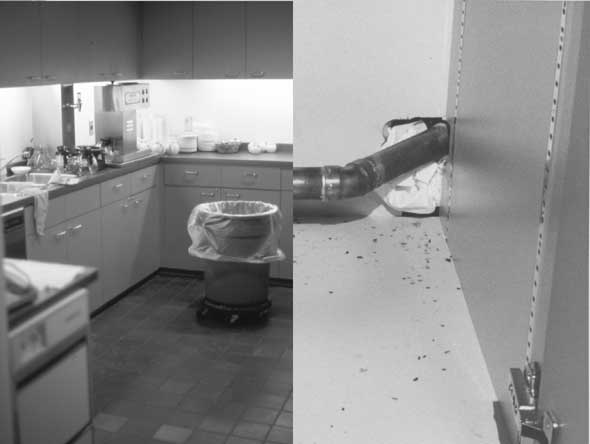
Hazards:
- a donor could become ill from contact with a rodent-related, faecal-borne disease
- mice could nest in stored fabric items (e.g. interpretation program costumes, textile arts, object padding) if the colony becomes established
How the mice got there:
- holes through building fabric were larger than 5 mm, due to construction projects that opened up exterior walls
- outside mice colonies feeding on ambient garbage in an adjacent park were attracted to the building
- badly sealed city sewer or steam pipe connections, and gaps under emergency and loading bay doors provided entry routes
Short-term control measures
Loose foodstuffs were cleaned out of cupboards and placed in sealed food containers, and garbage was placed in closed containers. Daily garbage removal was instituted. The access point was located, and an open path through the wall along a sink drainpipe was sealed. Snap traps were set to kill mice in the room and adjacent rooms, which were connected by the pipe chase.
Long-term control measures
Entering the facility's monthly pest control contractor's records into a graph showed a steady, but constant, accumulation of rodents caught monthly over several years. So either a small number enters frequently and does not survive the trapping program, the internal population has limited mating success, or a sparsely deployed (non-public areas) poison baiting system may be working to limit exponential growth. However, improved exclusionary practices and continued trapping are required to cause the annual catch numbers to drop toward zero.
Case Study 2: Mould Outbreak in a Rural Museum
Staff of a rural seasonal museum in a former community school building discovered mould and mildew on many objects and wall surfaces while preparing the museum for its spring opening (Figure 12). A persistent vandalism threat had forced them to board up all sash windows and external doors during the previous autumn closing. This act unwittingly changed the ventilation pattern of the building by restricting the air exchange rate. Damp spring weather added considerable moisture through a porous building fabric and the slab-on-grade concrete floor that was built on the site of a former wood-milling operation, which had left a lot of mill waste in the soil. The furnace was set to minimal activity in the core area during winter to prevent the pipes from freezing, leaving former classrooms unheated. Moisture in partially heated buildings moves from warmed areas and accumulates in cool areas. This situation, combined with the elevated internal humidity and warmer daytime temperatures for a couple of months before opening, encouraged mould spores to germinate on objects.
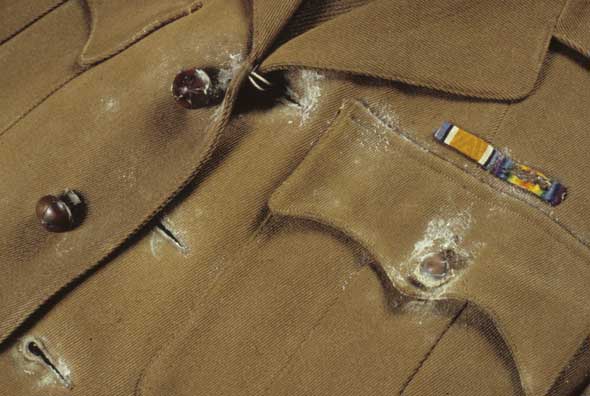
Short-term control measures
Opening an access door in the central corridor to a well-ventilated attic increased air extraction from the building and began removing excess moisture. This action of reducing compartmentalization and opening all inner room doors to allow ventilation through to the attic temporarily increased the fire spread hazard.
Long-term control measures
Use metal grills on windows to ensure security during the closed season (in place of the plywood sheathing previously used). Acquire and run dehumidifiers when the building is closed up (at a cost of buying and running the equipment). Portable dehumidifiers need a connection, such as a simple flexible hose, to a drain for unattended operation. Capacity of the humidifiers must match the enclosed building volume (Strang and Dawson a). Dehumidifiers operate less often during the winter season (their performance is constrained by low temperatures), but are entirely adequate during the critical spring season. Open the building earlier in the season to ensure effective ventilation and to detect problems earlier (increasing staff time on site). Clean objects according to a conservator's recommendation, and hard-surface clean with biocidal detergents.
Case Study 3: Insects Infest Donation to a Civic Museum
Clothes moths were found infesting a newly acquired uniform collection of hundreds of items (Figure 13). The civic museum has no money or permanent infrastructure for treatment. It would deaccession and dispose of the collection rather than risk spreading an infestation by incorporating these objects into the collection without treating them.
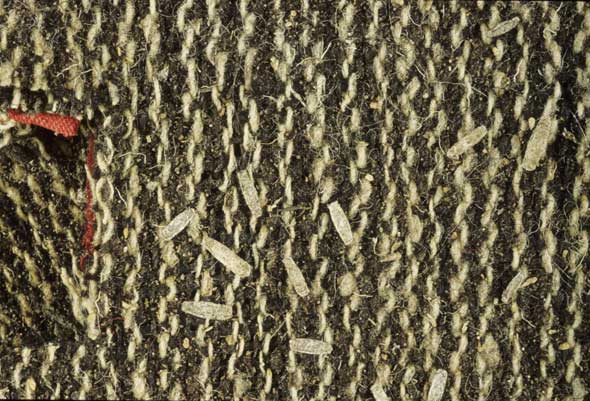
Short-term control measures
Quarantined the collection by sealing objects in polyethylene garbage bags, leaf bags, or equivalent barrier containers. Clearly labelled the bags with warnings: "PEST QUARANTINED ITEMS — DO NOT DISPOSE" or "MOTH INFESTED — DO NOT OPEN". Also annotated the bags with the responsible person's name, contact information, and date of enclosure. This adequately contained the hazard until treatment could be arranged.
Long-term control measures
Used outdoor winter conditions to cold-treat the entire collection on the museum rooftop, taking advantage of an elevator shaft superstructure that provided a shaded north exposure. The quarantine-bagged collection was set on tarpaulin-covered pallets that eliminated the possibility of contact with the roof, which could have conducted heat into the objects.
Wrapped in another tarp for protection against strong wind, the objects were exposed to low temperatures (predicted weather: less than −20°C all day for several days). The collection was exposed for as long as possible: minimum of 3 days for clothes moths, 1 week preferred. The collection was brought indoors, rewarmed overnight, and checked for living insects. Objects were cleaned before they were incorporated into the collection.
As an alternate strategy, infested objects could be treated one-by-one in borrowed space in household freezers while keeping all other objects quarantined in bags to prevent the pest's spread. Sometimes commercial freezer space can be arranged on a gratis basis or a refrigerated truck can be rented. Responding to this volume of infestation could fall under disaster planning and would profit from prior arrangements for services.
Case Study 4: Wood Borers in Rural Agricultural Museum
A rural agricultural museum's displayed wooden farm machinery and tool collections were severely affected by widespread lyctid wood borers. A local pest control company wanted $300 to look at the problem — money the museum did not have.
Short-term control measures
Consulting with the Canadian Conservation Institute (CCI), the provincial conservation advisor oversaw the construction of a safe and effective heat disinfestation chamber using volunteered professional services at the museum (Figure 14). Donated materials and air heating equipment were assembled on site. Staff ran several loads of mixed large and small items through the system, one load per day for about 7 hours under constant surveillance. The moisture balance was maintained by the high volume of material self-buffering the contents in the sealed chamber (Strang ).
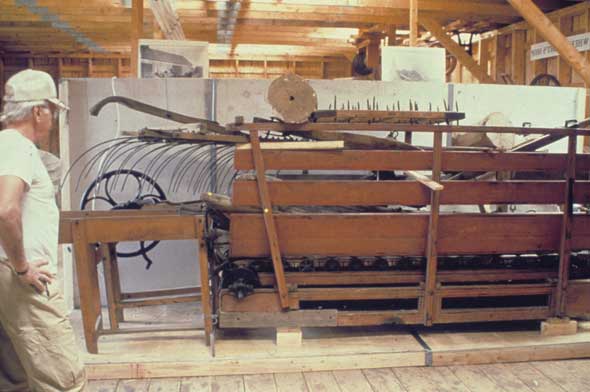
Long-term control measures
Because lyctid wood borers are found in the surrounding region and are associated with dead timber, any further pest activity in subsequent years should be noted immediately and the affected pieces put through low-temperature control or an in situ heat treatment. The museum and the objects should be thoroughly cleaned regularly to see if any insect frass piles are forming. Structural inspection of the building should be done to ensure that any hardwood elements are not affected by insect pests.
Application Guides
The following application guides are included to help an institution create a first-time IPM program. These guides were designed to be adaptable to a wide variety of situations. Specific pest eradication procedure guides are also available that demonstrate how to simply and correctly follow the various steps.
Designing an IPM program
This section outlines a basic IPM program. Each table describes a recognizable situation accompanied by IPM recommendations. It can be used to make a rapid survey of a current state and to note items to incorporate into a collection's IPM plan.
Levels 0–6. Doing an IPM survey to create a plan of action
Photocopy the tables so you can mark them up. Determine the nearest level to your situation by matching it to the table's headline description. Read the left column headings of Site, Building, Portable Fittings, and Procedure to see if these descriptions are roughly applicable to your situation. Use a highlighter to mark features that are present in your situation (left-side column). If the terms in the table matching your situation (level) are not applicable, search through adjacent tables to find more appropriate terms to capture the breadth of the situation across your holdings and highlight them. The actions in the right-hand column (Plan B), which are listed near the items you highlighted, are a guide to reasonable activities or modifications that will help ensure a better degree of protection.
One response to pest problems would be to move the collection from its existing level of enclosure to a higher level. Often this is an institution's ideal "Plan A" because it solves many problems in collection care, exhibition, etc. There are degrees of a "Plan A" response. A building upgrade providing new or additional collection storage is a much costlier proposition than a simpler "Plan A" response of moving wood wagons from field display to a place underneath an existing shed roof. Both would provide benefits to long-term preservation from biological and other deterioration mechanisms, but would have different residual vulnerabilities.
The Plan B column was created to show how one can fight back against pests in the given situation if a "Plan A" solution must wait or cannot be done. Using the suggestions given under Plan B, determine if the described activities are being performed, or if the suggested modifications are present in your facility. The Plan B columns were designed to include remedial suggestions where they would most likely be effective and not cause undue effort at that level.
The prognosis and expected deterioration are given as examples of what the uncontrolled situation might result in and the changes that might result from an IPM program or pest control treatments.
For a full description of the approach and rationale behind these tables, consult Strang and Kigawa ( ).
Level 0 — Outdoors with unrestrained access by harmful agents
Starting from a situation of no preservation steps taken, this is the base level from which to evaluate the effectiveness of any improvements to block pests. Plan B presents the first steps to reduce the effects of pests in this situation.
Level 0 — Outdoors with unrestrained access by harmful agents.

Level 1 — Roof or tarp only
Basic shelter from rain and overhead sun is provided by an architectural element, an applied covering, or a self-sheltering part of the exposed object. In your action plan, include appropriate action elements from Level 0, Plan B.
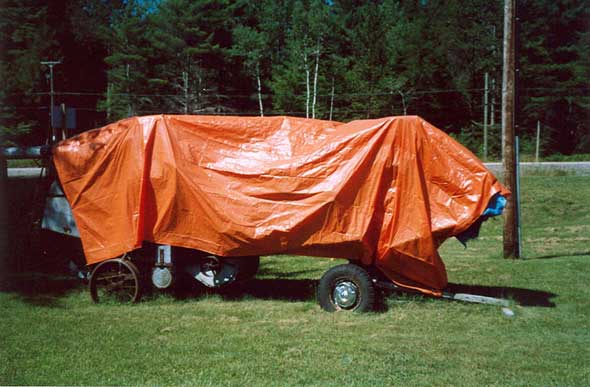
Level 2 — Roof, walls, and loose-fitting doors
This level offers more complete shelter from the elements. Contents may be exposed to wind-driven precipitation, oblique sun rays, excessive wind and wind-blown soil, snow, spores, and seeds. In your action plan, include appropriate elements from previous levels.
Roof, walls, and loose-fitting doors.
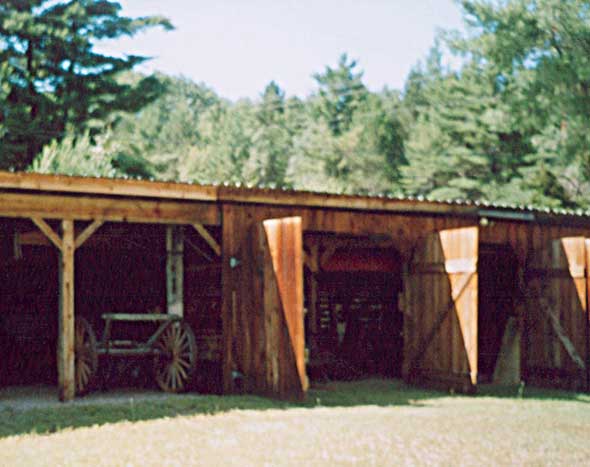
Level 3 — Basic habitation
Human housing that has reasonable protection from the effects of climate and coarse control of the interior environment through basic heating or ventilation. In your action plan, include appropriate elements from previous levels.
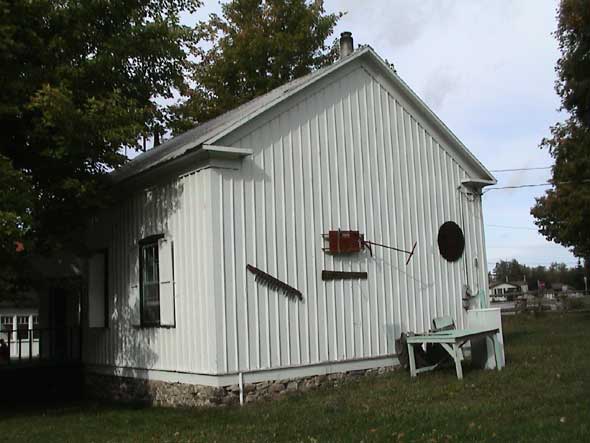
Level 4 — Adapted commercial
Adapted civic structures built for large-scale inhabitation, industrial processes, or business activities. Historic structures that possess elaborate architecture. In your action plan, include appropriate elements from previous levels.

Level 5 — Purpose built
Building designed as a museum, gallery, or archive accompanied by increased planning that integrates policies and features to include pest control with control of other agents of deterioration. Include appropriate elements from previous levels.

Level 6 — Preservation designed
A collections facility whose primary function is long-term preservation. Provides an excellent enclosure, with multiple layers that block routine hazards, and is designed to reduce calamities. In your action plan, include appropriate elements from previous levels.
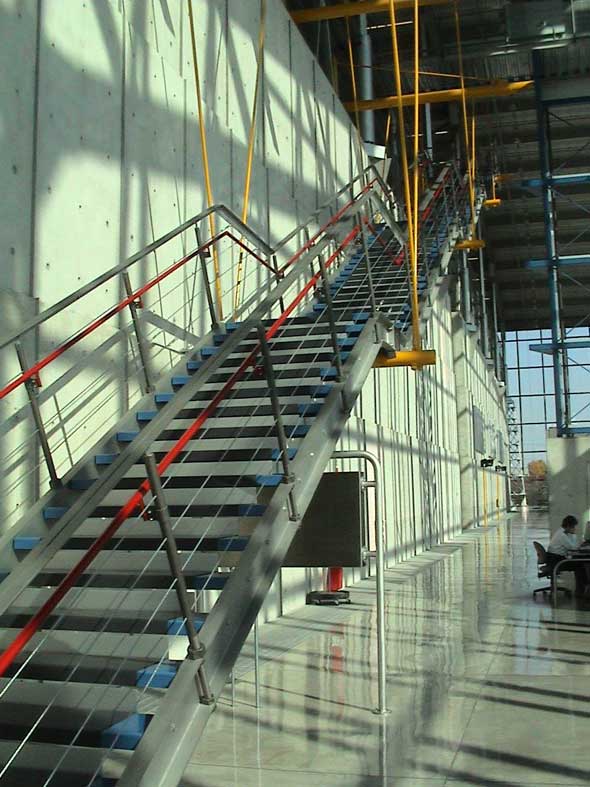
Progressive scales of IPM components
Column headings reflect activities and structural concerns that affect IPM in collection facilities. Use these headings to highlight elements your facility has. Notice the implied scale of improvement that is built into the previous Level 0 – 6 tables.
Each column in these tables is a scale, listing in incremental order the improved activities and features that are distributed across the levels (physical situations 0–6). These scales can be used as a brief, structured inventory of features and actions in your facility by highlighting elements that match your situation. The result is a summary "readout" of pest-inhibiting features. The scales can also be used to indicate areas of possible improvement by moving to the next better feature in the column; for example, "Sheltered from rain and sun" to "Protected from weather, may have winter heating".
| Level and situation | Examples | Avoid | ||||||
|---|---|---|---|---|---|---|---|---|
| Environment | Site | Object condition | Food waste | Lighting | Plants | Sanitation | ||
| [0] Outside | Totem pole, farm machine | Local climate and weather | No modification | Infested | Strewn throughout and around | Ambient natural or city lighting | Nearby flowering plants and deadwood sources of insect pests | No cleaning except by natural weathering and wind |
| [1] Roof, tarp | Shrines, under eaves | Sheltered from rain and sun | Possibly elevated, roof drainage | - | Consolidated in open containers | - | Encroaching foliage cut back (reduce moisture damage) | Dry sweeping raises dusts, but may damage some insects |
| [2] Roof, walls, and loose-fitting doors | Temples, sheds, barns | Sheltered from some wind-blown dirt and snow | Simple foundation drainage | Cleaned | Consolidated in closed containers | Some interior lighting | Cut back encroaching trees (reduce root damage) | Clutter provides pests with shelter and interferes with inspection |
| [3] Basic habitation | Historic homes, churches, temples | Protected from weather, may have winter heating | Subterranean foundation drainage | Sanitary | Hauled away weekly from exterior containers | Some lights mounted on exterior | Avoid cut wildflowers or inspect for insects before bringing indoors | Household vacuum and damp mop to capture dust and insects |
| [4] Adapted commercial | Civic archives, private gallery | Climate controlled by HVAC system to eliminate extremes | - | Disinfested | Removed daily from interior, hauled away weekly from exterior, closed containers | Mandated security lighting over doors | Restrictive policy includes inspection, treatment, or ban of high-risk vegetation (primarily local, cut wildflowers) | Clutter localized in designated workrooms |
| [5] Purpose built | Provincial and national museums up to the early s | Climate controlled by HVAC system to year-round human occupancy requirements | Site-wide floodwater drainage | - | Exterior compactor (rodent proofed) | Low-pest attraction lights (UV poor) on exterior | Nearby exterior: only non-flowering plants. Interior: only greenhouse cut flowers or healthy house plants in sterilized soil | Built-in vacuum system (bag room) isolates dust and captured insects |
| [6] Preservation designed | Collection preservation centres | Climate controlled by HVAC system to meet object preservation needs; low-temperature storage to control pests | Designed to manage 100-year cycle of extremes | - | Well-sealed interior garbage room (cooled) to control rodent and insect access | Attractive light draws insects from exterior walls and openings, light traps near entrance ways | - | HEPA vacuum portable units or built-in vacuum system with filters |
| [7] Ultimate | - | Optimal for all objects | - | Sterile | No food waste production | - | No plants that are attractive to pests | Clean room air supply |
| Level | Block | Detect | Respond | Recover | ||||
|---|---|---|---|---|---|---|---|---|
| Physical barrier | Physical resistance | Object enclosure | Object shelving | Maintenance | Suppression response | |||
| [0] | No barriers to pests | to object material | Intrinsic to object construction | Objects on ground | No inspection | No maintenance | Predators, disease, weather | No recovery, no accounting of cost |
| [1] | Structure may encourage bird roosting | Sheathing easily chewed or infiltrated | - | May sit on plinths, pallets | Annual visitation | Replace roofing, replace tarp | Residual pesticide fumigant application to entire collection | - |
| [2] | Perforations may allow rats, birds access | Sheathing gnawed by rodents and insects | Cardboard boxes | Gravel, concrete slab | Unplanned observation during use | Repair structural failures as found | Pesticide application targeted to specific outbreaks | - |
| [3] | Perforations may allow mice access, window and door screen block insect entry | - | Chests, fabric bags, jars, dressers, cupboards, gaping cabinets | Pantry shelves, sit on wood floor, carpet | Daily familiarity, inspections associated with incidence | Repair exterior seal failures as found | Low temperature, easy to obtain (control moisture risk, monitor for refrigerant leak hazard) | Thorough cleaning after infestation is treated to ease finding new outbreaks in future inspection program |
| [4] | Perforations may allow large insects access | Some mineral-based sheathing (joined stone brick) less prone to rodent or insect attack | Sealed wood cabinets, adapted commercial display cases, insect-resistant bags (polyethylene) | Sealed wood or metal racks elevate objects off floor | Periodic inspection of exterior and interior, incoming objects quarantined and visually inspected | Repair interior seal failures and interior building fabrics to support preservation needs including pest exclusion | Controlled atmosphere fumigation, increases treatment capacity (assume high-pressure gas supply hazard) | Managerial analysis of pest control problems, accounting of basic capital and contract costs |
| [5] | Perforations may allow small insects access | Mineral-based or metal sheathing impedes rodents and insects | Some tight metal cabinets, rest are wood with loose seals | Metal racks elevate objects off sealed concrete floor | Systematic use of rodent and insect traps to map problem areas, vulnerable objects inspected | Improve exterior building fabric to support preservation needs | Elevated temperature treatment, increases througout (controlled incremental thermal aging above natural rate) | Make physical improvements through capital planning (passive features) |
| [6] | Perimeter control blocks insects (perimeter corridor increases detection) | Near seamless sheathing resists rodent or insect attack | All metal cabinets, gaskets, compact shelving allows total floor cleaning | Compact shelving | Sensitive collections visually inspected annually | Replace aging components before failure | - | Make procedural improvements (active features), accounting of all internal labour costs |
| [7] | Hermetic | Metal can | Cabinet contents in cans, vials, or boxes with hermetic seals | High-density, robotic retrieval warehousing | All objects visually inspected annually | - | - | - |
Thermal control application guides
Unlike fumigation and pesticide use, thermal pest control is available to nearly everyone if they know how to achieve it. The following is a simple guide to estimate temperature and time required for effective thermal control, and to create the environment needed to kill insect pests.
Estimating time and temperature for thermal control methods
The most common question asked about applying thermal control is how long? This is discussed in sufficient detail below to help make good decisions.
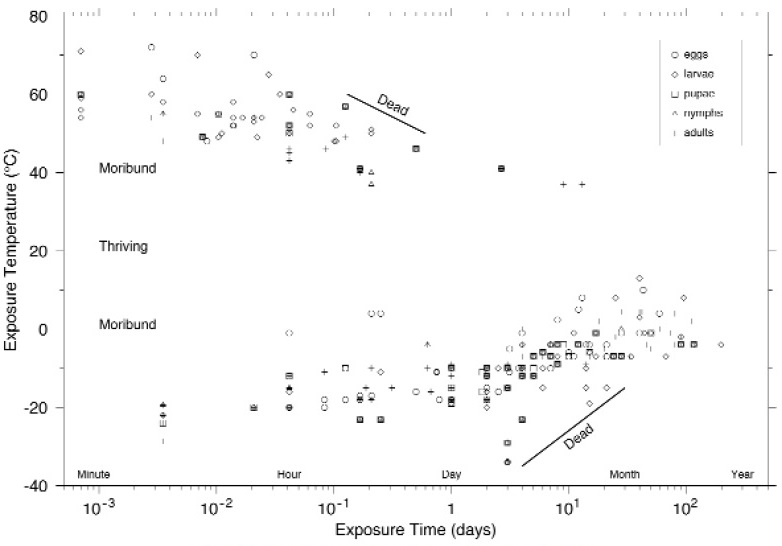
For those unfamiliar with logarithms, the first interval marked by a tick following the 101 (10 days) mark is 20 days, the second interval is 30 days, and so on. The value of 10−1 means 1/10th of a day. The term "moribund" describes the condition of the insects, but when that happens is variable by species, as shown by the wide distribution of mortality data, especially at lowered temperatures.
"Dead" status is defined by a line drawn just beyond the edge of the mortality data. This is likely a conservative estimate because the experiments were based on fixed increment inspections for any survival or recovery, rather than on looking at the subjects in real time and noting when they appeared to expire.
The low-temperature exposure method requires more time to be effective than the high-temperature protocol. Also, most low-temperature mortality occurs before and at warmer temperatures than the indicated limit line. This spread in the low-temperature data leads to various interpretations of the correct protocol. Some protocols have been specified to facilitate rapid treatment based on knowledge of the species after reviewing the data set. For such decisions, and a more detailed discussion of the data, please refer to the source paper (Strang ).
The boundary to the data supports a "worst case" recommendation, i.e. the material is suspected to be infested by insects, but the pest is unknown, and full control is desired. A −30°C exposure for a week or −20°C for 2 weeks will suffice. This method also presumes the objects come out of a month in warm storage, not from a cold outdoor environment in which some pest species could adapt to cold and subsequently survive such low-temperature exposure. In practice, the −30°C and −20°C exposures have usually been successful at shorter times (a few days at −30°C and a week at −20°C) because the species comprising the sparser data along the boundary are less common pests in collections (consult Strang for details).
For high-temperature control, 55°C is a good maximum exposure limit. However, because the mortality of insects at this temperature is nearly instantaneous, the limiting factor is the rate of heat penetration through objects, which is displayed in Figure 16.
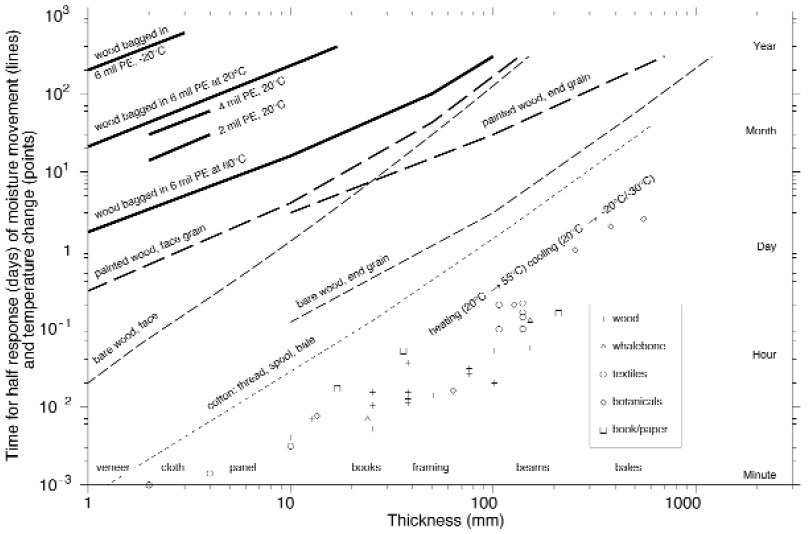
As in Figure 15, there is the the use of logarithm scales. The range of values would be difficult to present otherwise. Common descriptive terms are provided to help interpret the scales.
If you imagine an object fitting inside a rectangular volume, the smallest dimension is the one referred to as thickness in Figure 16. For example, the "thickness" of a piece of wood measuring 2 in. x 4 in. x 8 in. would be 2 in. (50 mm). Finding this dimension in millimetres on the scale allows one to determine the approximate time for "half response". The half response time is how long it takes for the object to go from the start condition to half way to the end condition (for example, when going from 20 to −20/−30°C, the time to get to −5°C is the half response time). It will take roughly the same time again to go to the 3/4 point, and the same time again to go to the 7/8 point, and so on. This response time is influenced by the material's insulation properties. A key is given to show the source materials tested. You can interpret a time based on evidence from this key, or simply take the most conservative value (largest number, top of the point distribution at the specified thickness). The half response is used because it is much easier to measure than the completion point. To figure out the rough time to completion, multiply this response time by four or five. If you want to keep the treatment as short as possible, do not rely on the estimate, instead use a test block of similar material in which a thermometer probe is inserted in order to measure in real time when to terminate the treatment.
For heat treating, the line in Figure 16 marked "wood bagged in 6 mil PE at 60°C" shows that enclosing objects in a vapour barrier before heating confers added protection against desiccation. This is a simple and common method. While the plotted lines demonstrate that paint and even "stagnant" air (technically called the "boundary layer" of air) will act as barriers to moisture loss, a simple plastic bag is the most effective and highly recommended. While there is a condensation risk inside a plastic bag during cooling after a heat treatment, letting the temperature of the container drop slowly so the dew point is not experienced inside the bag can greatly reduce this moisture hazard for sensitive objects. Wrapping the object with absorbent dunnage.
(E.g. a cotton sheet) Before bagging also provides a rapidly acting buffer to stabilize moisture content during treatment. For a full discussion of these factors and hazard mitigation, consult Strang ( , ).
During low-temperature treatments, exposure to condensation on removal or to dampness from complete failure of the freezer is prevented by using vapour-resistant bagging, and leaving it on through the re-warming phase. Leaving objects in bags can also prevent reinfestation if the storage area has not yet been decontaminated. Long-term storage in vapour-resistant bags can be beneficial as long as four conditions are not allowed to occur that would promote mould growth inside the bag. These recommendations come from observing the moisture sorption isotherms for organic materials and behaviour of moisture in bagged objects. To understand the relative risk being discussed, at 65% RH, mould growth is just possible to maintain in laboratory experiments, but at this level is very unlikely to initiate spore germination. Therefore, 65% RH represents a lower limit to mould formation. Deriving from microbial research, RH is a more appropriate measure of the water available for organisms (an equivalent to water activity) than the equilibrium moisture content (EMC) of the material on which the mould may grow.
-
Do not bag objects that have equilibrated above 65% RH for long-term storage. You will simply be trapping in moisture at a level that, in time, can support mould growth.
-
Do not bag objects that have equilibrated near 65% RH and subsequently store them in warmer conditions. The rise in temperature allows moisture to leave the object and elevate the RH in the bag toward levels that support microbial life. This only holds true until the upper limit in temperature for the mould is reached. Heat treatments to control pests are too high in temperature and too short in duration to support mould growth.
-
Do not bag objects and store them resting on a hot or cold surface that induces a thermal gradient (e.g. in winter, a cold concrete floor in a heated garage). This gradient causes moisture to accumulate in the colder side of the bag. This is a "mode of failure" in shiphold transit environments and in other similar situations. The resulting dampness leads to the bagged items spoiling.
-
Do not bag objects near 65% RH and then store them for a prolonged time in air that has a significantly higher RH. The moist air will eventually permeate the bag. The timeline for this may be many years: the governing factors are quality of the barrier; whether there are pinholes in the bags; and the volume of the object providing buffering capacity in the enclosure. In the meantime, beneficial effects will be significant. If year-round humidities are expected to be above 65% RH, a mild controlled drying of objects for long-term packaged storage can be a method of preserving highly vulnerable items in these difficult environments. Including RH measuring strips in the bags to provide an early warning of problems and periodically checking them would be advisable.
All of these situations are unlikely to cause mould problems in short-term pest treatments because of a lack of time for mould response, or because of temperature limits that prevent growth (too hot or cold).
Low-temperature control in a chest freezer or outdoors
This method is quite simple, but a few guidelines noted in the captions on the drawing need to be observed to ensure that it will work. Similar guidelines to ensure pests are killed and damage to objects is avoided should be followed when exposing objects to the cold outdoors. Outdoor exposure also requires maximizing cooling while preventing solar heat gain (e.g. use a light-coloured tarpaulin).
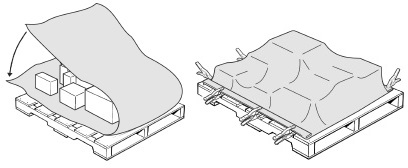
Outdoors: cover bagged objects with white plastic or white tarp andplace on a pallet when exposing them to cold, outdoor conditions. Placeobjects on the shady side of the building and secure against tamperingor theft. This method is only useful if the weather forecast predictsseveral days at −30°C or a week at a daytime high of −20°C.
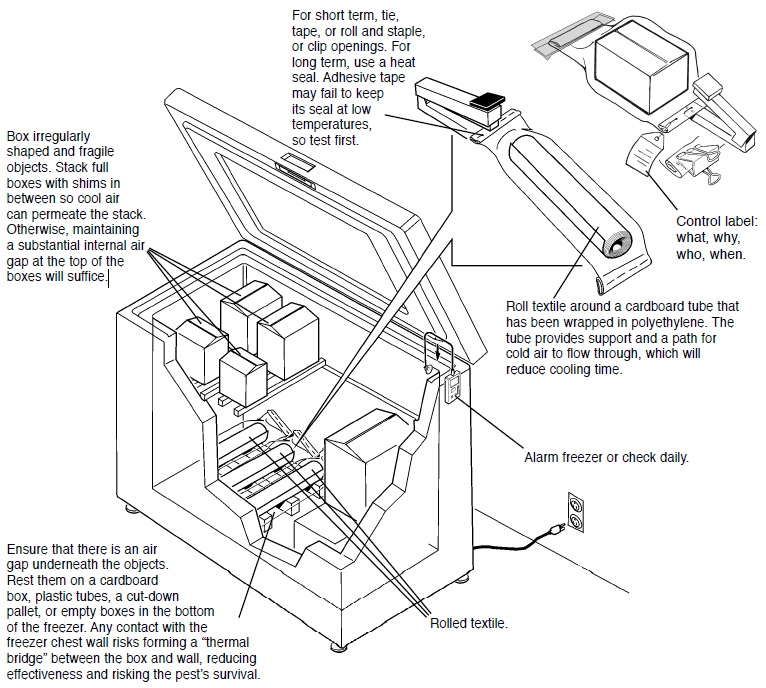
Figure 18 displays low-temperature control in a chest freezer with the following rules and items:
- Box irregularly shaped and fragile objects. Stack full boxes with shims in between so cool air can permeate the stack. Otherwise, maintaining a substantial internal air gap at the top of the boxes will suffice.
- For short term, tie, tape, or roll and staple, or clip openings. For long term, use a heat seal. Adhesive tape may fail to keep its seal at low temperatures, so test first.
- Ensure that there is an air gap underneath the objects. Rest them on a cardboard box, plastic tubes, a cut-down pallet, or empty boxes in the bottom of the freezer. Any contact with the freezer chest wall risks forming a "thermal bridge" between the box and wall, reducing effectiveness and risking the pest's survival.
- Control label: what, why, who, when
- Rolled textile.
- Roll textile around a cardboard tube that has been wrapped in polyethylene. The tube provides support and a path for cold air to flow through, which will reduce cooling time.
- Alarm freezer or check daily.
Heat disinfestation box
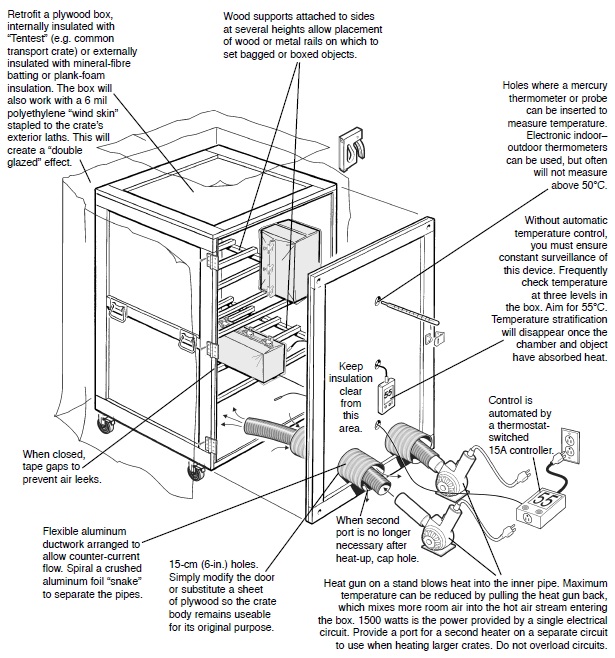
Figure 19: A wood shipping crate can be modified to make a heat disinfestation box. Instructions are as follows:
- Retrofit a plywood box, internally insulated with "Tentest" (e.g. common transport crate) or externally insulated with mineral-fibre batting or plank-foam insulation. The box will also work with a 6 mil polyethylene "wind skin" stapled to the crate's exterior laths. This will create a "double glazed" effect
- Wood supports attached to sides at several heights allow placement of wood or metal rails on which to set bagged or boxed objects.
- Holes where a mercury thermometer or probe can be inserted to measure temperature. Electronic indoor–outdoor thermometers can be used, but often will not measure above 50°C.
- Without automatic temperature control, you must ensure constant surveillance of this device. Frequently check temperature at three levels in the box. Aim for 55°C. Temperature stratification will disappear once the chamber and object have absorbed heat.
- When closed, 15A controller. tape gaps to prevent air leeks.
- Flexible aluminum ductwork arranged to allow counter-current flow. Spiral a crushed aluminum foil "snake" to separate the pipes.
- 15-cm (6-in.) holes. Simply modify the door or substitute a sheet of plywood so the crate body remains useable for its original purpose.
- Keep insulation clear from this area.
- Control is automated by a thermostat-switched, 15A controller.
- When second port is no longer necessary after heat-up, cap hole.
- Heat gun on a stand blows heat into the inner pipe. Maximum temperature can be reduced by pulling the heat gun back, which mixes more room air into the hot air stream entering the box. 1500 watts is the power provided by a single electrical circuit. Provide a port for a second heater on a separate circuit to use when heating larger crates. Do not overload circuits.
A wood shipping crate can be modified to make a heat disinfestation box, as shown in the diagram. Heat is provided by one or two 1500-watt industrial, metal-bodied heat guns or an equivalent industrial hot air source. Do not use plastic hair dryers or household heaters because they are not designed for continuous operation at the necessary temperature. Safety is a primary issue. A Canadian Standards Association (CSA) approved heat source is placed outside the box, blowing heated air, mixed with room air, into the metal duct, which is insulated from the crate by an air gap. This technique must be supervised at all times. Pay attention to the thermometer readings especially if the box does not have automated temperature control.
Solar disinfestation plenum frame
This simple frame provides sufficient heat gain from spring to fall when used on a clear day in Canada to disinfest thick, folded textiles or other materials. The plenum design transfers heat to the shady side of the object bag, eliminating the risk of dampness forming on the shade side of the object. It also speeds up the disinfestation process. Use a thermometer to measure the temperature on the surface of the black bag containing the object, or a temperature probe or wireless thermometer inside the object bag. When the temperature appears to be rising too high (above 60°C), you can control it by turning the frame off-axis from the sun. The frame should be tied to a support to prevent the wind from toppling it.
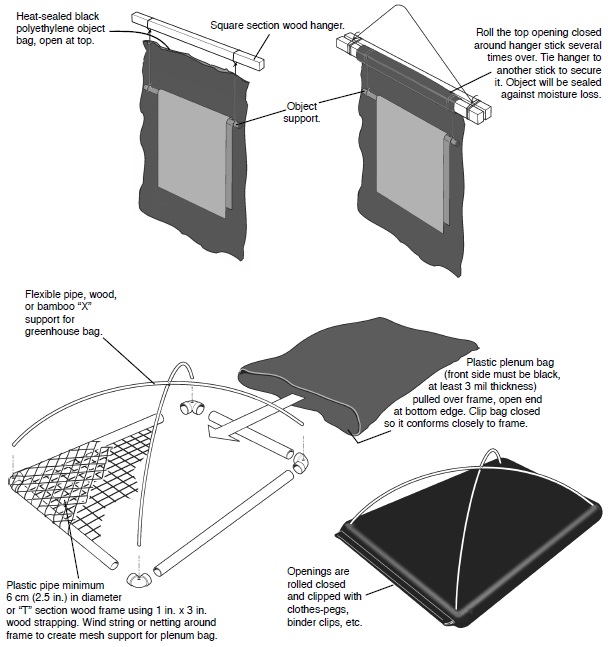
Figure 20 displays the following rules and items:
- Heat-sealed black polyethylene object bag, open at top.
- Square section wood hanger.
- Object support.
- Roll the top opening closed around hanger stick several times over. Tie hanger to another stick to secure it. Object will be sealed against moisture loss.
- Flexible pipe, wood, or bamboo "X" support for greenhouse bag.
- Plastic plenum bag (front side must be black, at least 3 mil thickness) pulled over frame, open end at bottom edge. Clip bag closed so it conforms closely to frame.
- Plastic pipe minimum 6 cm (2.5 in.) in diameter or "T" section wood frame using 1 in. x 3 in. wood strapping. Wind string or netting around frame to create mesh support for plenum bag.
- Openings are rolled closed and clipped with clothes-pegs, binder clips, etc.
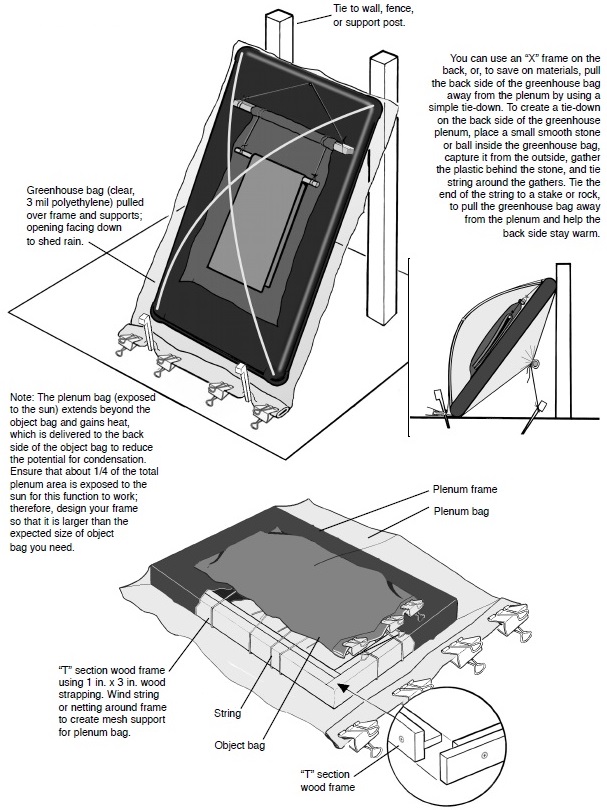
Figure 21 displays the following rules and items:
- Greenhouse bag (clear, 3 mil polyethylene) pulled over frame and supports; opening facing down to shed rain.
- Tie to wall, fence, or support post.
- You can use an "X" frame on the back, or, to save on materials, pull the back side of the greenhouse bag away from the plenum by using a simple tie-down. To create a tie-down on the back side of the greenhouse plenum, place a small smooth stone or ball inside the greenhouse bag, capture it from the outside, gather the plastic behind the stone, and tie string around the gathers. Tie the end of the string to a stake or rock, to pull the greenhouse bag away from the plenum and help the back side stay warm.
- Note: The plenum bag (exposed to the sun) extends beyond the object bag and gains heat, which is delivered to the back side of the object bag to reduce the potential for condensation. Ensure that about 1/4 of the total plenum area is exposed to the sun for this function to work; therefore, design your frame so that it is larger than the expected size of object bag you need.
- "T" section wood frame using 1 in. x 3 in. wood strapping. Wind string or netting around frame to create mesh support for plenum bag.
- Plenum frame, Plenum bag, String, Object bag.
- "T" section wood frame
Solar disinfestation pillow
This arrangement does not require making a rigid frame. Therefore it involves a bit more careful heat sealing than does the plenum frame, but when deflated, the pillow can be stored in a much smaller space. As well, many of these pillows can be easily constructed. It is just as efficient as the plenum frame. However it is vulnerable to windy conditions; therefore, tying a pillow to stakes using a strong line is advised.
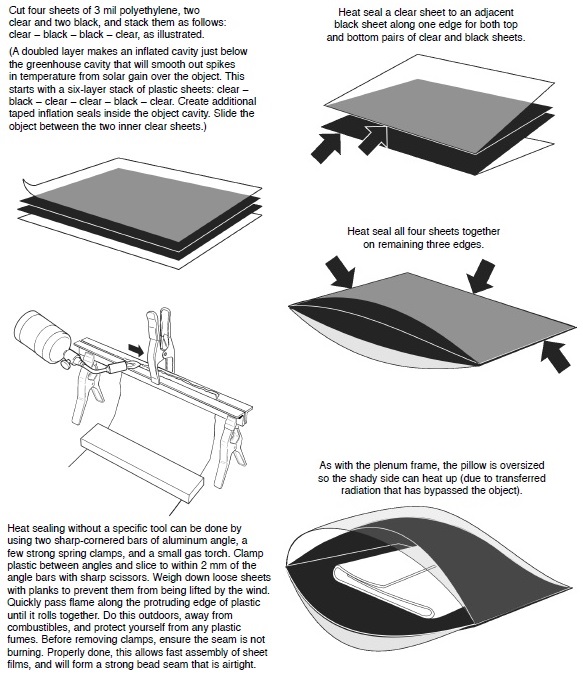
Figure 22 displays the following rules and items:
- Cut four sheets of 3 mil polyethylene, two clear and two black, and stack them as follows: clear – black – black – clear. (A doubled layer makes an inflated cavity just below the greenhouse cavity that will smooth out spikes in temperature from solar gain over the object. This starts with a six-layer stack of plastic sheets: clear – black – clear – clear – black – clear. Create additional taped inflation seals inside the object cavity. Slide the object between the two inner clear sheets.)
- Heat sealing without a specific tool can be done by using two sharp-cornered bars of aluminum angle, a few strong spring clamps, and a small gas torch. Clamp plastic between angles and slice to within 2 mm of the angle bars with sharp scissors. Weigh down loose sheets with planks to prevent them from being lifted by the wind. Quickly pass flame along the protruding edge of plastic until it rolls together. Do this outdoors, away from combustibles, and protect yourself from any plastic fumes. Before removing clamps, ensure the seam is not burning. Properly done, this allows fast assembly of sheet films, and will form a strong bead seam that is airtight.
- Heat seal a clear sheet to an adjacent black sheet along one edge for both top and bottom pairs of clear and black sheets.
- Heat seal all four sheets together on remaining three edges.
- As with the plenum frame, the pillow is oversized so the shady side can heat up (due to transferred radiation that has bypassed the object).

Figure 23 displays the following rules and items:
- Insert objects between black plastic faces through the edge opening, which is then rolled and clipped closed. During construction, it is possible to create a flange of plastic here to reduce the chance that the clips might perforate the cavity.
- Stake the pillow with string to prevent the wind from tumbling it.
- Use an indoor–outdoor thermometer or max–min thermometer to check temperature.
- If adhesive tape is unavailable, a valve can be made by inserting a plastic soda bottle neck with its cap into the bag, sealing it with gum, tire repair sealant, etc., and binding it by wrapping strong twine around the bottle neck.
- Put a patch of strong tape (ideally vinyl) on each clear cover. Make a small slit through the tape into just the clear covers. Insert the hose from an air pump or bellows and inflate both cavities until the black plastic faces are pressing together. Tape the slit closed with another patch of the same vinyl tape. Make a tab to grip the sealing tape by folding its end back.
Bibliography
- Canadian Food Inspection Agency. n.d. (accessed ).
- Dawson, J. (revised by T.J.K. Strang). Solving Museum Insect Problems: Chemical Control. Technical Bulletin 15. Ottawa: Canadian Conservation Institute, . (Pesticides and their uses.)
- Guild, S., and M. MacDonald. Mould Prevention and Collection Recovery: Guidelines for Heritage Collections. Technical Bulletin 26. Ottawa: Canadian Conservation Institute, .
- Imholte, T.J. Engineering for Food Safety and Sanitation, 2nd edition. Medfield, MA: Technical Institute of Food Safety, . (Guidelines for facility design to reduce pest hazards; contains many applications for collections buildings.)
- Kingsley, H., D. Pinniger, A. Xavier-Rowe, and P. Winsor. Integrated Pest Management for Collections. London: James & James, . (In-depth chapters on key aspects of IPM and case studies.)
- Lecointre, G., and H. Le Guyader. The Tree of Life: A Phylogenetic Classification (translated by K. McCoy). Cambridge: The Belknap Press of Harvard University Press, .
- Maekawa, S., and K. Elert. The Use of Oxygen-Free Environments in the Control of Museum Insect Pests. Los Angeles: The Getty Conservation Institute, . (Thorough summary of anoxic control methods for cultural property.)
- Pinniger, D. Pest Management in Museums, Archives and Historic Houses. London: Archetype Publications Ltd., Reprinted . 115 pp. (Concise, illustrated guide to all aspects of IPM specifically applied to cultural property; a book to begin your IPM program.)
- Strang, T.J.K. "A Review of Published Temperatures for the Control of Pest Insects in Museums." Collection Forum 8, 2 ( ), pp. 41–67.
- Strang, T.J.K. "The Effect of Thermal Methods of Pest Control on Museum Collections." pp. 334–353 in Biodeterioration of Cultural Property 3. Proceedings of the 3rd International Conference on Biodeterioration of Cultural Property, – (edited by C. Aranyanak and C. Singhasiri). Bangkok, Thailand: Thammasat University Press, .
- Strang, T.J.K. Preventing Infestations: Control Strategies and Detection Methods. CCI Notes 3/1. Ottawa: Canadian Conservation Institute, a.
- Strang, T.J.K. Detecting Infestations: Facility Inspection Procedure and Checklist. CCI Notes 3/2. Ottawa: Canadian Conservation Institute, b.
- Strang, T.J.K. Controlling Insect Pests with Low Temperature. CCI Notes 3/3. Ottawa: Canadian Conservation Institute, .
- Strang, T.J.K. Psocids or "Book Lice": A Warning of Dampness. CCI Notes 3/4. Ottawa: Canadian Conservation Institute, .
- Strang, T.J.K. "Principles of Heat Disinfestation." pp. 114–129 in Integrated Pest Management for Collections (edited by H. Kingsley, D. Pinniger, A. Xavier-Rowe, and P. Winsor). London: James & James, . (Explains how heat disinfestation can be efficacious, rapid, and non-damaging to cultural property.)
- Strang, T.J.K., and J.E. Dawson. Controlling Museum Fungal Problems. Technical Bulletin 12. Ottawa: Canadian Conservation Institute, a.
- Strang, T.J.K., and J.E. Dawson. Controlling Vertebrate Pests in Museums. Technical Bulletin 13. Ottawa: Canadian Conservation Institute, b.
- Strang, T.J.K., and R. Kigawa. "Levels of IPM Control: Matching Conditions to Performance and Effort." Collection Forum 21, 1-2 ( ), pp. 96–116. (IPM activities; categorized by applicability to situation, from outdoor objects to designed preservation facilities; a guide for approaching IPM design.)
- Tétreault, J. Airborne Pollutants in Museums, Galleries, and Archives: Risk Assessment, Control Strategies, and Preservation Management. Ottawa: Canadian Conservation Institute, .
- Warren, S. "Carbon Dioxide Fumigation: Practical Case Study of a Long-Running Successful Pest Management Programme." pp. 95–101 in Integrated Pest Management for Collections (edited by H. Kingsley, D. Pinniger, A. Xavier-Rowe, and P. Winsor). London: James &James, .
Identification Guides
- Borror, D.J., C.A. Triplehorn, and N. Johnson. An Introduction to the Study of Insects, 6th edition. Toronto: Harcourt Brace College Publishers, . (Insect form, function, and keys for identification.)
- Bousquet, Y. Beetles Associated with Stored Products in Canada: An Identification Guide. Publication #1837. Ottawa: Research Branch, Agriculture Canada, . (accessed ).
- Hedges, S.A., and M.S. Lacey. A Field Guide for the Management of Structure-Infesting Beetles. Cleveland, OH: G.I.E Inc. Publishers, .
- Mallis, A., D. Moreland, and S.A. Hedges (editors). The Mallis Handbook of Pest Control, 9th edition. Cleveland, OH: Mallis Handbook & Technical Training Company, . (The standard reference for the pest control industry.)
- Meaney, P. Carpet Beetles, Textile Moths and Related Insect Pests. The Harvard Library – Handbook One. Leicester, UK: Harvard Pest Consultancy, .
- Meehan, A.P. Rats and Mice: Their Biology and Control. East Grinstead, UK: Rentokil Limited, .
Glossary Footnote 3
- Arthropods ( Arthropodes)
- Animals with multi-part bodies, exoskeletons; includes spiders and insects.
- Anoxia ( Anoxie)
- A state without oxygen.
- Bacteria ( Bactéries)
- Self-dividing single-cell organisms that digest matter. Some can infect other living organisms.
- Bait station ( Point d'appât)
- A secure container designed to deliver poison bait to pests (commonly rodents) while protecting other animals and humans from coming into contact with the bait.
- Controlled atmosphere fumigation ( Fumigation sous atmosphère contrôlée)
- Altering standard atmospheric gas ratios to kill a living organism by suffocation, desiccation, and disrupted metabolism.
- Disinfestation ( Désinfestation)
- The act of killing or removing an infestation.
- EMC ( Degré d'humidité d'équilibre)
- Equilibrium moisture content; percentage of object mass that is water after waiting until no mass change is measurable at a specified humidity and temperature.
- Enclosure ( Mise sous enceinte)
- The act of enclosing to prevent pests entering or escaping; the physical means of enclosing, by using bags, boxes, jars, vials, or other containers, including buildings; the provision of a degree of separation from the external environment.
- Fumigation ( Fumigation)
- Use of a toxic gas or vapour to kill an organism.
- Fungi ( Champignons)
- Multicellular organisms that form colonies, characterized by hyphae and spore-forming bodies (e.g. mushrooms, mould).
- Geotextile ( Géotextile)
- Engineered fabric or film material to control soil movement or water in soil.
- Hypercarbia ( Hypercarbie)
- Elevated concentrations of carbon dioxide gas (greater than 0.03% in Earth atmosphere).
- Insects ( Insectes)
- Animals with six legs, an exoskeleton, and three distinct body parts (head, thorax, abdomen).
- Integrated pest management (IPM) ( Lutte intégrée)
- A methodology for combining activities to suppress pest damage through knowledge of pest biology, environmental factors, and response technologies, while being compatible with preservation of cultural objects.
- Integument ( Tégument)
- Outer shell or exoskeleton of arthropods.
- Microorganisms ( Microorganismes)
- "Tiny rascals that rule planet Earth."
- Mould ( Moisissures)
- Mono- and multicellular fungi characterized by forming thin mats or distributed colonies over surfaces.
- Oxygen scavenger ( Sorbant)
- A chemical substance that is added to an oxygen barrier container in order to remove unwanted oxygen.
- Pest ( Organisme nuisible, parasite)
- Something living, but unwanted.
- Pesticide ( Pesticide)
- A solid, liquid, or gaseous chemical intended to eliminate a living organism.
- Quarantine ( Quarantaine)
- A process of isolation, determination of hazard, and treatment.
- Registered pesticide ( Pesticide homologué)
- A compound legal to use as a pesticide in specific jurisdictions, which has known formulation, human toxicity, and efficacy.
- RH (HR)
- Relative humidity; portion of water vapour present divided by the upper limit of water vapour possible at any one temperature.
- Rodent ( Rongeur)
- Vertebrate, characterized by permanently growing incisor teeth, e.g. mice, rats.
- Semiochemicals ( Substances sémiochimiques)
- Chemicals that alter an organism's behaviour.
- Structural pests ( Ravageurs des structures)
- Pests of buildings whose activities affect building strength.
- Symbiosis ( Symbiose)
- Beneficial/cooperative living arrangement between organisms, e.g. non-pathological association of microorganisms and insects for digesting food.
- Systematics ( Systématique)
- The science of classifying organisms into related groups.
- Thermal control ( Lutte thermique)
- Use of low or high temperatures to eliminate a living organism.
- Viruses ( Virus)
- Infectious particles containing genetic material that commandeers living cells for their own reproduction.
- Zoonoses ( Zoonoses)
- Diseases of non-human origin that cross over to humans in close contact with infected animals or their wastes (e.g. H5N1 avian influenza)
Related resources
Time-lapse Video of Deterioration: Parchment and Iron Key, Incorrect Relative Humidity

Time-lapse Video of Deterioration: Parchment and Iron Key, Incorrect Relative Humidity
This video was created by the Canadian Conservation Institute.
Transcript | Watch on YouTube
Thanks to the Centro Nacional de Conservación y Restauración in Chile, the Canadian Conservation Institute’s web resource Agents of deterioration, translated into Spanish by ICCROM, is now available free of charge. Intended for curators and conservators, the resource identifies 10 primary threats specific to heritage environments.